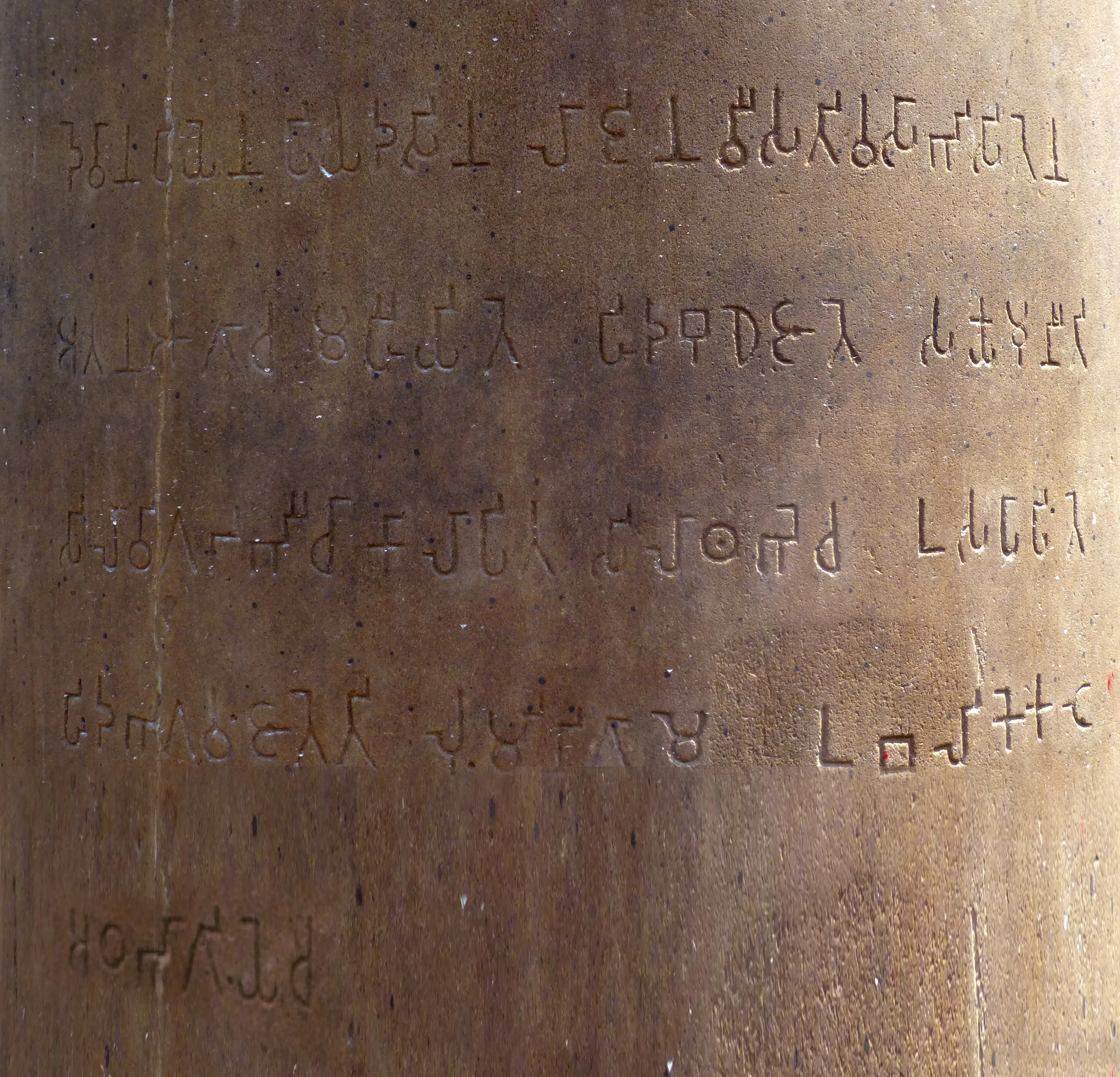Brahmi - An Ancient Indian Script
Brahmi script is one of the earliest scripts known to India. It came into existence in the form of stone inscriptions during the reign of Asoka, in 4th - 3rd century BCE.
 The Rummindei Edict, one of the Minor Pillar Edicts of Ashoka, Photo Dharma from Penang, Malaysia, Charlie Phillips from London, UK
The Rummindei Edict, one of the Minor Pillar Edicts of Ashoka, Photo Dharma from Penang, Malaysia, Charlie Phillips from London, UK
According to Wikipedia:
Brahmi (/ˈbrɑːmi/ BRAH-mee; 𑀩𑁆𑀭𑀸𑀳𑁆𑀫𑀻; ISO: Brāhmī) is a writing system of ancient India that appeared as a fully developed script in the 3rd century BCE. Its descendants, the Brahmic scripts, continue to be used today across Southern and Southeastern Asia.
Although Brahmi was probably not known during the Buddha’s lifetime1, it is likely it may have been used to capture the Buddha’s teachings in the years following his death. The pillars of Ashoka feature inscriptions in Brahmi. Today, there are probably no surviving examples of the Buddha’s teachings preserved in Brahmi, so it is generally not used in Buddhist literature.
Footnotes
Section titled “Footnotes”-
However, according to Wikipedia, the 10th chapter of the Lalitavistara Sūtra (c. 200–300 CE), titled the Lipisala samdarshana parivarta, lists 64 lipi (scripts), with the Brahmi script starting the list. The Lalitavistara Sūtra states that young Siddhartha, the future Gautama Buddha (~500 BCE), mastered philology, Brahmi and other scripts from the Brahmin Lipikāra and Deva Vidyāiṃha at a school. ↩